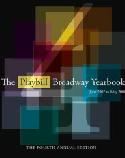SITE GUIDE
SEARCH
REVIEWS
REVIEW ARCHIVES
ADVERTISING AT CURTAINUP
FEATURES
NEWS
Etcetera and
Short Term Listings
LISTINGS
Broadway
Off-Broadway
NYC Restaurants
BOOKS and CDs
OTHER PLACES
Berkshires
London
California
New Jersey
DC
Connecticut
Philadelphia
Elsewhere
QUOTES
TKTS
PLAYWRIGHTS' ALBUMS
LETTERS TO EDITOR
FILM
LINKS
MISCELLANEOUS
Free Updates
Masthead
A CurtainUp Feature
Comparing Two Hamlets
It was a rare privilege to see two remarkably exciting actors portray Hamlet this fall. Gareth Saxe recently concluded his run as the conflicted Danish prince for the Shakespeare Theater of New Jersey. Two weeks later I went to see Jude Law in the role that many consider one of the most challenging and open-to-interpretation in the entire canon. Introspective, brooding, vengeful, deliberate, wishy-washy, manic depressive, aggressive, brooding, crafty, cunning, and tormented, are only a few of the adjectives that get ascribed to this ultimately tragic character.
And what a grand thing it is to see the role gain in its complexity when actors with grace and intellectual curiosity approach it. For the most part, the role attracts those who feel they have the technique to sustain its physical rigors and also those who have the vocal training and eloquence that can make the many famous soliloquies resonate with conviction. (To read my response to Saxe's performance here For Lizzie Loveridge and Elyse Sommer's take on the Donmar production starring Law go here.)
What is it that one Hamlet has and the other does not have? Or more to the point, which one of these fine actors comes closest to hitting the mark of a memorable Hamlet?
Saxe and Law are both good-looking, young and trim enough in their appearance to hurl themselves wholeheartedly through the play that, in both cases, was clocked at 3 hours and 10 minutes. And so to compare: Saxe was more idiosyncratically frenzied and seemed to be edging toward a state of permanent inebriation instead of madness. It worked. Law is quite forthright from the start in showing us his disgust and disdain with the whole lot of them in that rotten state. This worked as well.
For the rest of the play, Law makes us consider him as the disillusioned center of his own universe, as corrupted as it is. As suspicion and rage are key components to Hamlet's behavior, Law accomplishes this with a stunning bravado. The second act begins with Law in a contemplative pose that Rodin might recognize before he proceeds with the delightful " Speak the speech, I pray you, " with amusing aplomb.
Although I was impressed by the way Saxe delivered the famous "To be or not to be" soliloquy sitting at a writing desk, Law does it just as commendably while standing in falling snow. While black and grey were the primary colors for both productions, Law was more conspicuously a non-conformist and disheveled in appearance going about in bare feet. His romantic moments are benefited by the refreshingly original approach to Ophelia, who, as beautifully played by Gugu Mbatha-Raw, goes mad without being maddening. Unfortunately there was no chemistry in the air between Saxe and Lauren English, who, as Ophelia, lost her mind romping about in a girdle and panties. Rosencrantz and Guildenstern have never been the same since Tom Stoppard gave them their due. But there is no excuse for the lack of complementary camaraderie that John MacMillan and Harry Attwell are addressing these roles on Broadway.
Although there are many things that I liked about both productions, Monte's production has the edge over the one directed on Broadway by Michael Grandage simply by being presented up close and in an intimate setting. Grandage's staging is workmanlike, but also clever. One way he puts his stamp on it is to put Law in the spotlight down stage center at the start of play and even before the appearance of the ghost.
How often have suburb players in the supporting roles in Hamlet been able to shift or tilt the play in their direction by the sheer power of their performance? Robert Cuccioli did this as the most charismatic Claudius I can recall seeing. Through his sardonic but hypnotic gaze one could honestly see how Gertrude was bedazzled and seduced by her brother-in-law. The pity was that the Gertrude, as played by Jacqueline Antaramian, made little impression. On Broadway Geraldine James is a magnificent Gertrude only to have to share the stage with Kevin R. McNally, an actor who unfortunately makes little impression in this key role.
Grandage's modern-y production, highlighted by a towering black brick wall setting designed by Christopher Oram is effective. Budgetary restraints forced Monte to be her own (and quite good) designer. But why does Grandage have Hamlet's father's ghost (Peter Eyre) stroll nonchalantly about the castle without benefit of fog or haze? That was just plain weird. Eyre's stentorian tones are almost funny, but they are put to better use when he doubles as the Player King. Monte's clever stroke was to have Cuccioli play both Claudius and the ghost, a sound decision considering the family tie.
There is no question that one should see Law as Hamlet if only to see this talented actor become one of those whom we may recall as memorable. As these two productions prove, it is difficult to achieve a perfect production of Hamlet. Until that happens, we can continue to be confounded, moved, and excited by the myriad ways that interpreters choose to present it.
|
Subscribe to our FREE email updates with a note from editor Elyse Sommer about additions to the website -- with main page hot links to the latest features posted at our numerous locations. To subscribe,
E-mail: esommer@curtainup.comesommer@curtainup.com
put SUBSCRIBE CURTAINUP EMAIL UPDATE in the subject line and your full name and email address in the body of the message -- if you can spare a minute, tell us how you came to CurtainUp and from what part of the country. |






